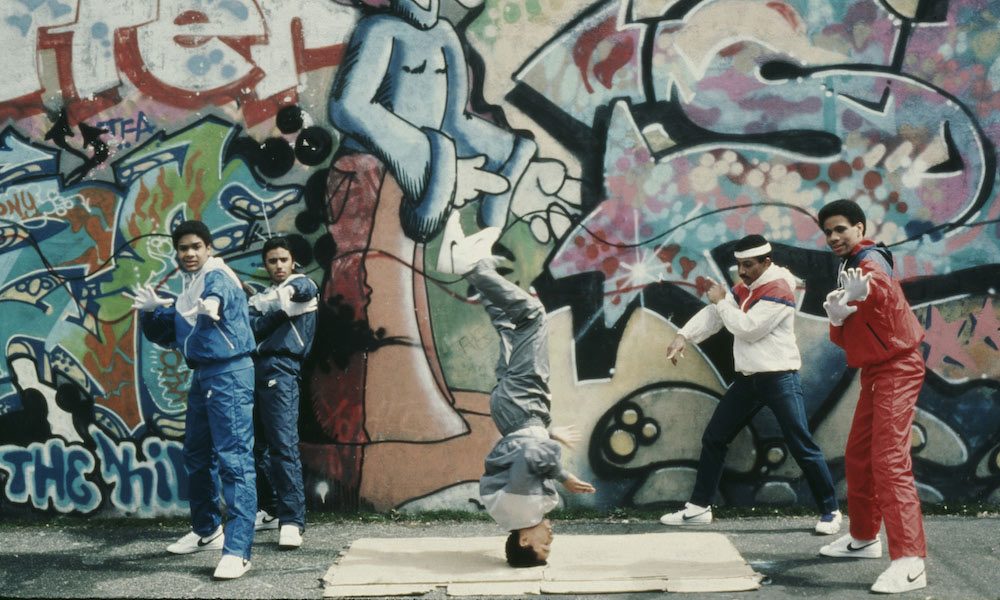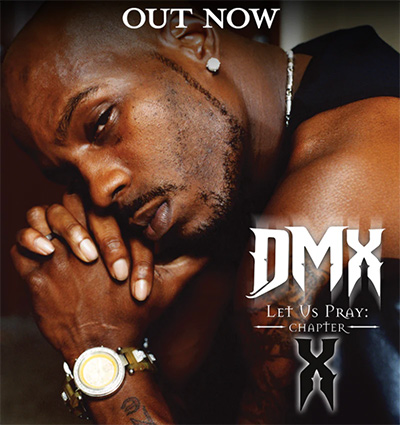A History Of Hip-Hop In 20 Essential Songs
It’s impossible to tell the history of any genre in a single article, but these 20 songs provide a roadmap for listening… and further exploration.

A history of hip-hop in 20 songs? It’s difficult enough to condense one artist’s career into 20 songs, but any attempt to do the same for an entire genre is a fool’s errand. It’s an interesting exercise, nonetheless. If you were speaking to someone that wasn’t familiar with the genre, what songs would you pick to tell the history of hip-hop?
You’d of course need to start at the beginning. And, hip-hop, perhaps uniquely among all musical forms, has a generally accepted start date. That came on August 11, 1973, when the teenage DJ Kool Herc played his sister’s birthday party in the basement of their apartment complex in the Bronx, New York. Herc was behind the style’s early innovations, particularly the isolating and repeating of percussion sections of funk records, using a second copy of the same record, and extending the breakdowns so the athletically inclined dancers could let loose. These extended percussion breaks became known as breakbeats, and the people dancing to them were called breakdancers, or B-boys and B-girls. Soon, masters of ceremony – MCs, sometimes phonetically rendered as “emcees” and eventually known as “rappers” – would shout out greetings to friends at the parties, and started chanting poems over the top of them.
The first records started coming out in mass in 1979, by which time rapping was a well-developed art. That first flowering of DJ-based hip-hop, however, was never recorded. The nearest we have to a sense of what those parties sounded like arrived in 1980 when Grandmaster Flash released “The Adventures Of Grandmaster Flash On The Wheels Of Steel,” a showcase of his astounding skills.
Along with Herc and Flash, the other member of hip-hop’s “holy trinity” of founding DJs was Afrika Bambaataa. The Master Of Records would drop obscure European or Japanese sounds into his block party sets. With his MC crew, Soul Sonic Force, he made his debut on record in 1982. “Planet Rock” fused Kraftwerk with programmed drums and properly kicked off the hip-hop sub-genre known as electro.
If you only had 20 songs to tell the history of hip-hop, you might want to go to Run-DMC in 1986 next. The trio’s third album, Raising Hell, found them going back to the block-party era for inspiration, removing programmed drums from their sound and relying once again on sampled breakbeats. When their producer, Rick Rubin, suggested they didn’t just rap over the drums at the beginning of Aerosmith’s “Walk This Way,” but do a cover version of the original song, the group created the first hip-hop hit to resonate strongly outside the music’s core fan base. It took rap global.
The floodgates opened and innovation through sampling and verbal gymnastics was unleashed in 1988. Rakim, a teenager from Long Island, invested rap with poetic panache, and he and his DJ partner, Eric B, took Bob James’ jazz-funk breakbeat staple “Nautilus” into outer space on “Follow The Leader.” Fellow Long Islanders Public Enemy took up the gauntlet thrown down in 1982 when Melle Mel’s “The Message” showed rap could be a medium of social commentary and protest: PE built a rep as hip-hop’s version of The Clash, “Fight The Power” among their most indelible anthems. Meanwhile, over in Los Angeles, rappers started talking about the gang wars blighting the city’s predominantly black suburbs, and with “Straight Outta Compton” and its parent album, N.W.A codified what got tagged as “gangsta rap”: it would be a signature style of hip-hop for years to come.
From here, the branches of the hip-hop tree spread out in all directions. Back on the East Coast, the playful Native Tongues coalition made brighter music than the intense politics of PE or the gangsta style of N.W.A. The family included groups such as De La Soul, Jungle Brothers, and A Tribe Called Quest, whose second album, 1991’s The Low End Theory, featured the all-time classic posse cut “Scenario,” featuring their friends, Leaders Of The New School. Tribe’s Q-Tip and Leaders’ Busta Rhymes would go on to become major stars in their own right. Women had always had a place in the history of hip-hop too, and Salt-N-Pepa’s third album, released in 1993, saw the female trio enjoy massive worldwide success, songs like “Shoop” turning macho tropes on their head.
After former N.W.A member Dr. Dre saw his The Chronic go massive, the Wu-Tang Clan, nine MCs from Staten Island and Brooklyn, recast hip-hop as the spiritual descendant of ancient Chinese martial arts with songs such as “C.R.E.A.M..” Nas dropped the near-perfect debut Illmatic the following year, and Notorious BIG fused gangsta and storytelling on his vivid, cinematic Ready To Die.
As Biggie told us on the first full song of that album, “Things Done Changed” in the rap game. He became embroiled in a feud with rapper-actor 2Pac, and as both men met violent deaths in the second half of the 90s, the music seemed gripped by crisis – despite songs like Pac’s 1995 single “Dear Mama,” which showed that it was possible to straddle the boundaries between the “conscious”, political style and the more street-oriented crime-life raps. It was left to KRS-One, an ever-present icon since his debut with Boogie Down Productions in 1986, to remind the world of the foundational principles of rapping, DJing, breakdancing and graffiti on the brilliant 1997 cut “Step Into A World (Rapture’s Delight).”
Anything was now possible. Lauryn Hill won a shelf-full of Grammys with her 1998 solo debut and, on “Everything Is Everything,” showed us that a rap can take you through space and time in an instant, in a way nobody had really managed since Rakim. In the new millennium, Atlanta duo OutKast brought the blistering pace of UK drum’n’bass production, the screaming guitars of psychedelic rock, and light-speed rapping skills to bear on the dizzying, brilliant “BOB,” where metaphors drawn from the headlines of day were deployed as warnings to competitors not to test the duo’s stylistic supremacy. Also in 2000, Eminem, a white native of Detroit, became the genre’s Elvis: a globe-conquering star who took the music into millions of new homes, but did so without dumbing the genre down with songs like “Stan.”
A year later, Missy Elliott turned heads (and much more) with her Timbaland-assisted “Get Ur Freak On.” And just a bit after that, Kanye West, a producer-turned-rapper, teamed up with Biggie and Nas contemporary Jay-Z on “Diamonds from Sierra Leone (Remix)” to critique rap’s culture of conspicuous consumption and get the bling-obsessed scenesters to start thinking about what their shine really cost. The Roots, a group who’d played live instruments from day one (they started out as buskers), stand as a refutation of the oft-voiced criticism that hip-hop is all about musical theft: the buzz and clatter of “Here I Come” was a standout on their excellent 2006 album, Game Theory, but went on to have a life beyond that when the unprecedentedly versatile group were hired as the house band on Late Night With Jimmy Fallon. (The song became the show’s theme tune.)
As hip-hop history becomes a longer and longer story, some themes endure. Case in point: Critics that seem to think rap is a lesser art form. Kendrick Lamar knows that feeling: the uplifting anthem “Alright” was criticized for promoting the kind of social decay and negativity it was written to help its listeners overcome in 2015. He’d win a Pulitzer Prize in 2018… and the critics, seemingly, only got louder.
Nonetheless, the history of hip-hop is all about perseverance. And the music continues to reverberate and resonate around the world. There have been great hip-hop records made in France, Germany, Japan, South Africa, Sweden, and scores of countries besides. In the UK, decades of innovation and experimentation have seen styles like drum’n’bass, Britcore, and grime grow in their own right, and impact the rest of the art form too.
“Feeling Myself,” a collaboration between three of the grime scene’s longest-serving MCs, shows the cycle of influence turning full circle, as Chip, Kano, and Wretch 32 take the sounds, styles, and slang of London and deliver verses as intricately layered and cleverly nuanced as anything in rap history. Indeed, as Wretch references Biggie’s “Things Done Changed” and twists the late rapper’s line into the spark of a new theme and a plea for wit and intelligence to triumph, we see and hear the essence of what hip-hop has always been about. Nearly 50 years after its birth, hip-hop still reigns supreme.
Explore the global diaspora of hip-hop on our global cypher playlist.












